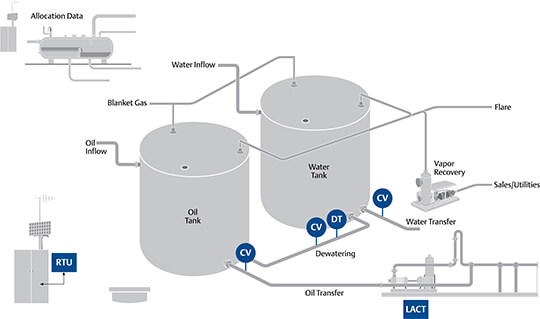For onshore oil & gas producers, squeezing every expense possible from the production and custody transfer process means the difference between flowing and shutting in the wells. In an RBN Energy post, LOE-Down – Understanding Lease Operating Expenses And How They Drive Production, they examine lease operating expenses (LOEs):
I caught up with Emerson’s Michael Machuca on ways instrumentation and automation can play a role in driving down operating expenses. He noted that one key way is reduce the number of trips that need to be taken to the well pad location.…the costs incurred by an operator to keep production flowing after the initial cost of drilling and completing a well have been incurred––are a go-to variable in assessing the financial health of E&Ps.
The RBN Energy post explains the relationship between LOE and personnel tending to the production sites:
…the costs associated with employees known as “pumpers,” “well tenders,” or “lease operators,” who regularly monitor and maintain onshore wells. Their wages, vehicle expenses, gasoline costs, and any other expenses they have for items they use while tending to the wells (such as methanol for de-icing) are all LOEs.
Manually measuring, tracking and accounting for the oil, gas and water produced is time consuming and labor intensive—contributing to higher LOEs. Errors in this manual approach can lead to large discrepancies in produced versus sales volumes and produced water disposal costs.
 Adding wireless measurements to tank levels, production and test separators and vapor recovery systems combined with tank management, remote accessibility, and real-time accounting can significantly reduce these discrepancies and reduce LOEs.
Adding wireless measurements to tank levels, production and test separators and vapor recovery systems combined with tank management, remote accessibility, and real-time accounting can significantly reduce these discrepancies and reduce LOEs.
The post’s author also notes:
Other LOE elements come from operating and maintaining the on-site production equipment used to keep wells flowing and to process the hydrocarbons they produce so that they will be in a form suitable for transportation away from the lease.
Some of these operating and maintaining activities include adjusting artificial lift rates for the wells, adjusting the chokes to optimize flow rates, adjusting chemical injection rates and changing the speed on plunger lifts. Many operators have reported chemical costs are their second highest operating expense, so better managing chemical usage with automated chemical management applications can have a significant reduction in LOE.
Not only do these manual operations increase expenses, but they also have a negative impact on production if not addressed in a timely manner. With wellhead automation, artificial lift optimization, chemical management optimization and other process equipment optimization applications, many of these activities can change from manual to automatic mode with remote experts monitoring performance.
For example, wireless pressure transmitters monitoring casing and tubing pressures can be added to identify changes in reservoir conditions that may impact production rates. Early notification of these conditions mean that remediation plans can be made and executed sooner than was possible through onsite, manual observations. Also, through closed loop optimization and control, injection rates and well back pressure levels can be continuously adjusted to maximize production rates.
For more on ways to lower LOEs, visit the Produced Fluids Management page or speak with some of our experts at the January 24-25 Well Site Automation 2017 conference in Houston, Texas.
You can also connect and interact in the Oil & Gas group in the Emerson Exchange 365 community.

